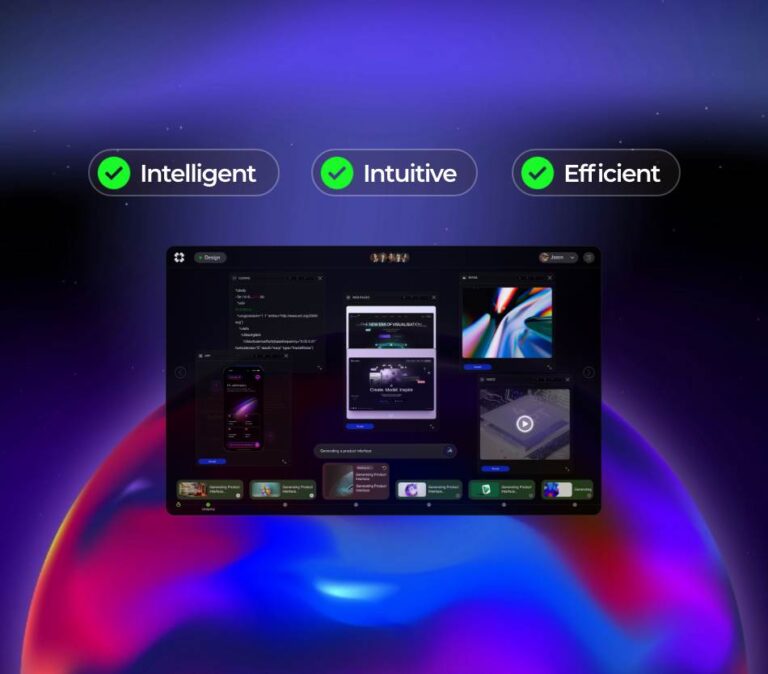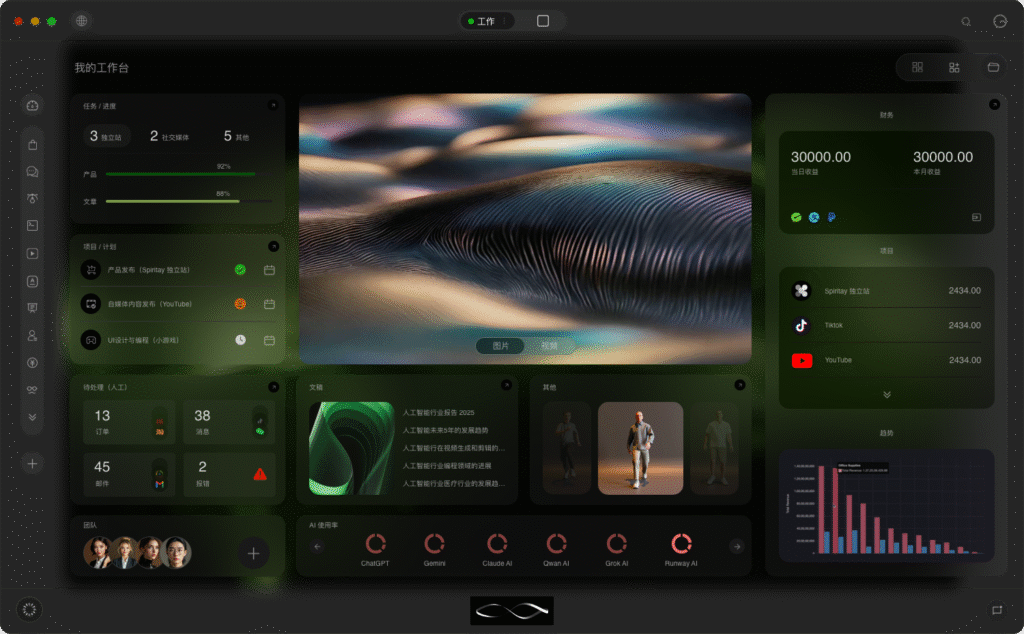Introduction: What IPA actually does for organizations
Intelligent process automation (IPA) is the integration of software automation, machine learning, and decisioning to move work from humans to machines with intent and context. Picture an accounts payable team: instead of manually opening invoices, matching line items, and chasing approvals, an IPA system extracts invoice data, validates it against purchase orders, routes exceptions to humans, and learns approval heuristics over time. That simple scenario shows how automation improves speed, accuracy, and compliance — when designed and operated well.
Why beginners should care
For non-technical readers, think of IPA like a smart assistant for business processes. Rather than removing humans from the loop entirely, IPA reduces repetitive work and makes humans more effective at judgment tasks. Three practical examples:
- Customer support triage: ML models classify tickets, automated actions apply known fixes, and only complex issues go to agents.
- Invoice processing: OCR plus rule engines and ML reduce manual data entry and speed payments.
- Field service: an AI-based human-machine interface guides technicians through diagnostics and suggests parts ordering.
These are not futuristic — many organizations already report reduced cycle times and fewer errors. The key is pairing predictable automation patterns with human oversight.
High-level architecture: components that form IPA
At an architectural level, an IPA system typically includes:
- Connectors and ingestion: interfaces to email, ERP, CRM, databases, and file stores.
- Data processing: document OCR, entity extraction, and normalization pipelines.
- Decisioning layer: rules engines, business process management (BPM), and ML-driven policy evaluators.
- Orchestration and workflow engine: schedule, route, and retry tasks; examples include Apache Airflow, Temporal, and Argo Workflows.
- Agents and RPA bots: UI automation frameworks such as UiPath, Automation Anywhere, Blue Prism, and open-source options like Robocorp.
- Model serving: low-latency inference using Triton, BentoML, KServe, or hosted model APIs.
- Human-machine interfaces: dashboards, chatbots, or augmented UIs often enhanced by AI-based human-machine interfaces for natural interactions.
- Observability and governance: logging, tracing, monitoring, security, and audit trails.
Integration patterns and trade-offs
Choosing how IPA components communicate shapes reliability and scalability. Common patterns:
- Orchestration (centralized workflow engine): The engine coordinates each step. It’s easier to audit and debug, but can become a bottleneck if not scaled properly.
- Choreography (event-driven): Services react to events on a bus. This pattern is resilient and scales well but requires strong observability to trace multi-step processes.
- Hybrid: Use orchestration for core processes and event-driven flows for auxiliary tasks (notifications, analytics) to balance control and scale.
Another decision is synchronous vs asynchronous operations. Synchronous flows are simpler for short interactions, while asynchronous messaging (Kafka, RabbitMQ, cloud pub/sub) is essential when tasks involve long-running human approvals or third-party system latency.
API design and developer considerations
APIs are the contract between IPA components. Practical guidance for engineers:
- Idempotency: APIs should handle retries safely. Use idempotency keys and status endpoints.
- Correlation IDs: Propagate a request ID across services to stitch traces together for observability.
- Versioning and backward compatibility: Processes evolve; design APIs with non-breaking additions and explicit version headers.
- Async callbacks and webhooks: Use webhooks for long-running operations and design retry/backoff strategies.
- Schema evolution: Use schema registries and compatibility checks for message contracts.
Deployment, scaling, and operational concerns
Deployment choices depend on data sensitivity, latency requirements, and team skills.
- Managed SaaS vs self-hosted: SaaS simplifies upgrades and ops but can limit control over data residency. Regulated industries often choose hybrid or on-prem deployments.
- Container orchestration: Kubernetes is the common baseline for scale and resilience; serverless functions can be useful for spiky inference tasks.
- Autoscaling: Horizontally scale stateless services and ensure stateful workflow engines have proper leader election and persistence backends.
- Cost model: Track inference cost per transaction (GPU/CPU minutes), storage for logs and models, and licensing for RPA tools. Use throttling and batching to control cost at scale.
- Failure modes: Plan for transient downstream failures, model outages, and cascade effects. Implement circuit breakers and back-pressure.
Observability, monitoring, and metrics to watch
Practical metrics provide early warning and measure ROI. Track:
- Latency percentiles for critical paths (p50, p95, p99).
- Throughput (transactions per second) and concurrency limits.
- Success rate and error rate per workflow step.
- Model performance: accuracy, drift signals, and confidence distributions.
- Business KPIs: cycle time, FTE hours saved, cost per transaction.
Instrument with traces and logs (OpenTelemetry), metrics (Prometheus), and dashboards (Grafana). Add automated alerts for SLA breaches and model drift thresholds.
Security, compliance, and governance
IPA systems touch sensitive data and automated decisions. Key controls:
- Access controls and RBAC for bots and model endpoints. Ensure least privilege for connectors to ERP/CRM systems.
- Data minimization, encryption in transit and at rest, and token lifecycle management.
- Audit trails for every automated action and human override. This matters for compliance and post-incident analysis.
- Model governance: model provenance, validation, shadow testing, and a rollback plan.
- Regulatory constraints: consider the EU AI Act obligations and follow frameworks like NIST AI RMF for risk management.
Practical implementation playbook
Here is a step-by-step playbook to get started with IPA in a pragmatic way:

- Identify a single, high-value, stable process with measurable KPIs (e.g., invoice cycle time).
- Map the current process and define success criteria—what to automate vs what requires human judgment.
- Choose connectors and an orchestration pattern based on latency and audit needs.
- Start with a lightweight proof of value: simple rules + an ML model in shadow mode to validate predictions without automating decisions.
- Implement observability from day one: logs, traces, and business-level metrics.
- Introduce human-in-the-loop workflows for exceptions and gradually increase automation coverage as confidence grows.
- Govern models and monitor drift; retrain or rollback when performance degrades.
- Scale by templating workflows, standardizing connectors, and introducing governance guardrails.
Developer trade-offs: monolithic agents vs modular pipelines
Monolithic agents (single large bot that does everything) are easier to deploy initially but hard to maintain. Modular pipelines favor separation of concerns: a document pipeline, a validation microservice, a decision engine, and a UI agent. Modular design simplifies testing, scaling, and replacing models or components.
Vendor landscape and practical comparisons
Market choices split into RPA-first vendors (UiPath, Automation Anywhere, Blue Prism), developer-centric orchestration engines (Temporal, Apache Airflow, Argo), and model-serving/MLops platforms (MLflow, Kubeflow, KServe, BentoML). Open-source RPA alternatives like Robocorp and Taskt reduce vendor lock-in for UI automation. Newer vendor features include integrated embeddings-based search and knowledge retrieval — for example, platforms that bundle a DeepSeek AI-powered search experience into process contexts to surface relevant documentation and past resolutions for agents.
Trade-offs:
- Enterprise RPA suites offer mature connectors and governance but can be expensive and heavyweight.
- Open-source stacks give flexibility but require more ops and integration effort.
- Managed AI services speed time-to-value but complicate data residency and model explainability requirements.
Case studies and ROI signals
Real examples illustrate outcomes:
- Finance team automates invoice intake and approval: 70% fewer manual touches, invoice processing time reduced from days to hours, and 20% reduction in late payment penalties.
- Customer support center uses ML triage + automation for routine fixes: First-contact resolution improved, average handle time reduced, and agent satisfaction rose.
- Field service uses an AI-based human-machine interface that guides technicians with contextual repair steps and parts ordering, reducing repeat visits by 30%.
ROI metrics to track: time saved per case, reduction in manual FTE hours, error rate reductions, and compliance cost avoidance.
Common operational pitfalls
Teams frequently underestimate the following:
- Data quality problems that break ML models and rules.
- Hidden exceptions that explode as automation coverage grows.
- Insufficient rollback and human override paths.
- Poor monitoring that fails to detect model drift until customers complain.
Future outlook and standards
Expect two converging trends: richer agent frameworks combining chain-of-thought orchestration (LangChain-style) with robust workflow engines, and better model governance baked into MLOps platforms. Standards for model metadata and explainability are gaining traction; initiatives like the NIST AI RMF and the EU AI Act will shape procurement and deployment decisions. Tools that combine enterprise search with process context — think of DeepSeek AI-powered search embedded in workflow UIs — will unlock faster resolution and reuse of institutional knowledge.
Choosing where to start
If you’re responsible for an automation roadmap, begin with three practical filters:
- Business value: target processes with high volume and manual effort.
- Technical fit: prefer processes with structured inputs or predictable patterns for earlier wins.
- Operational readiness: choose teams with at least minimal observability and an appetite for iterative improvement.
Key Takeaways
Intelligent process automation (IPA) is a pragmatic blend of RPA, ML, and orchestration that can deliver measurable operational improvements when engineered carefully. Start small, instrument everything, and prioritize modular architectures, robust APIs, and governance. Watch latency and throughput, control costs through batching and autoscaling, and use observability to detect drift and failures early. Consider vendor trade-offs between managed suites, open-source components, and specialist tools like model-serving platforms and newer capabilities such as DeepSeek AI-powered search or AI-based human-machine interfaces. With the right playbook and governance, IPA can transform processes while keeping risk and complexity manageable.










